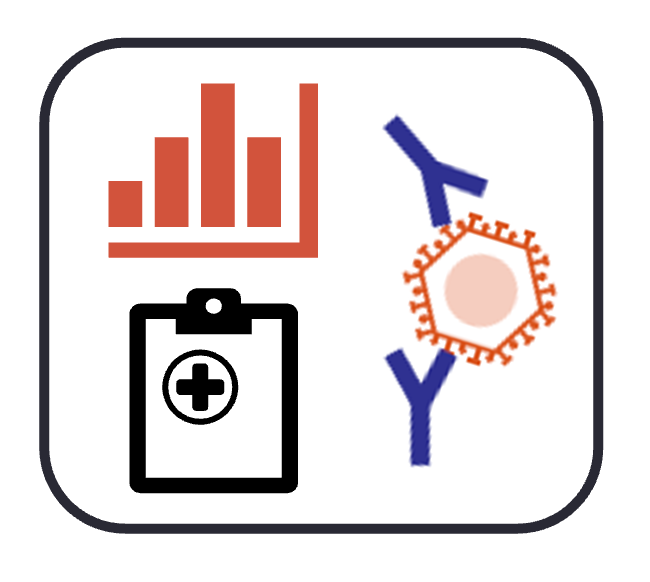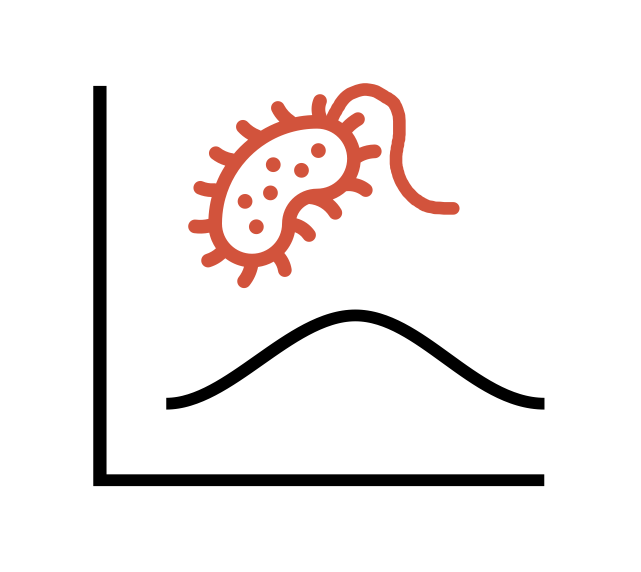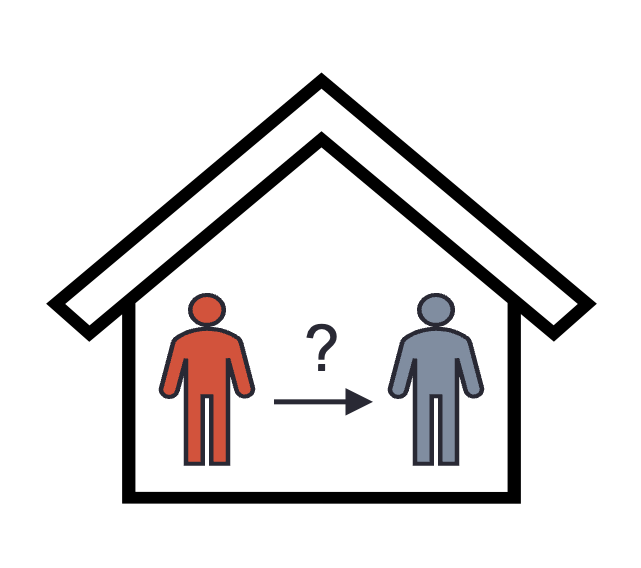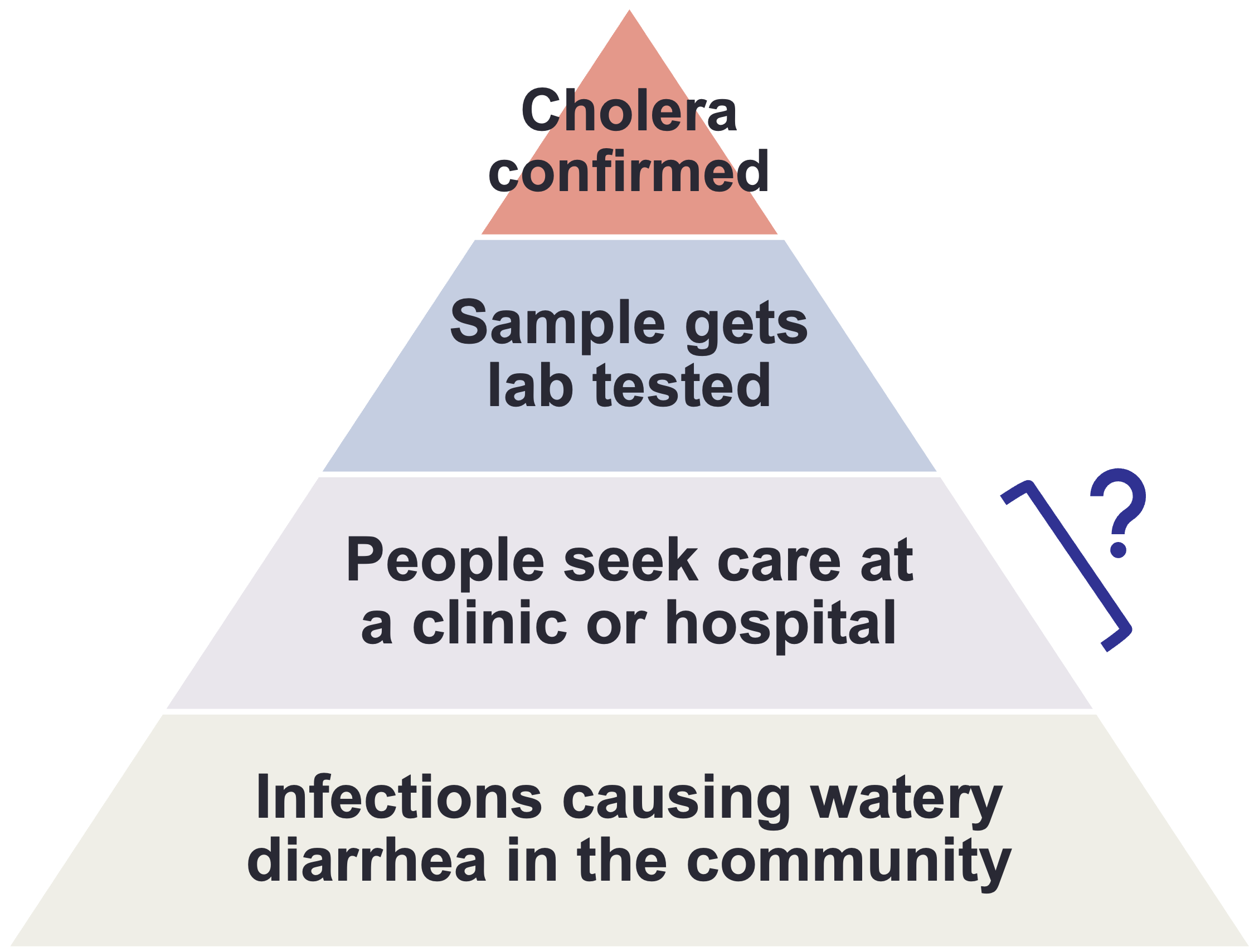Research
Our goal is to help build effective disease mitigation strategies.
Unfortunately, the places that are hit hardest by infectious diseases often also have the spottiest data. These infections can get missed because of:
![]() mild or asymptomatic infections
mild or asymptomatic infections
![]() barriers to healthcare access
barriers to healthcare access
🧪 limited testing resources
In our lab, we focus on better understanding these “unobserved” infections in two main areas of funded research:
I. Understanding the role of mild & asymptomatic infections in cholera transmission
In this project, we want to learn how much unobserved infections contribute to the spread of cholera. We are working with collaborators in the USA, Bangladesh, and Democratic Republic of the Congo to achieve three specific goals:
 1) Use diverse types of health data (serological, clinical, and care-seeking) together to estimate how many cholera infections go unobserved.
1) Use diverse types of health data (serological, clinical, and care-seeking) together to estimate how many cholera infections go unobserved.
 2) Measure the duration of cholera bacteria shedding in individuals with acute watery diarrhea compared to those with mild or asymptomatic infections.
2) Measure the duration of cholera bacteria shedding in individuals with acute watery diarrhea compared to those with mild or asymptomatic infections.
 3) Use statistical transmission models to compare the probability of infection after being exposed to close contacts with symptomatic or asymptomatic cholera.
3) Use statistical transmission models to compare the probability of infection after being exposed to close contacts with symptomatic or asymptomatic cholera.
II. Identifying missed cholera & diarrheal cases and barriers to seeking care
We’re studying how many people seek medical help when they or their children have diarrhea symptoms. Our findings will help estimate the actual number of cholera cases and make sure resources like vaccines get to the right places.
To achieve this goal, we are conducting a systematic review and meta-analysis, where we will combine information from multiple studies to understand:

- The proportion of people with diarrhea that don’t seek healthcare
- The reasons why some people may not seek healthcare